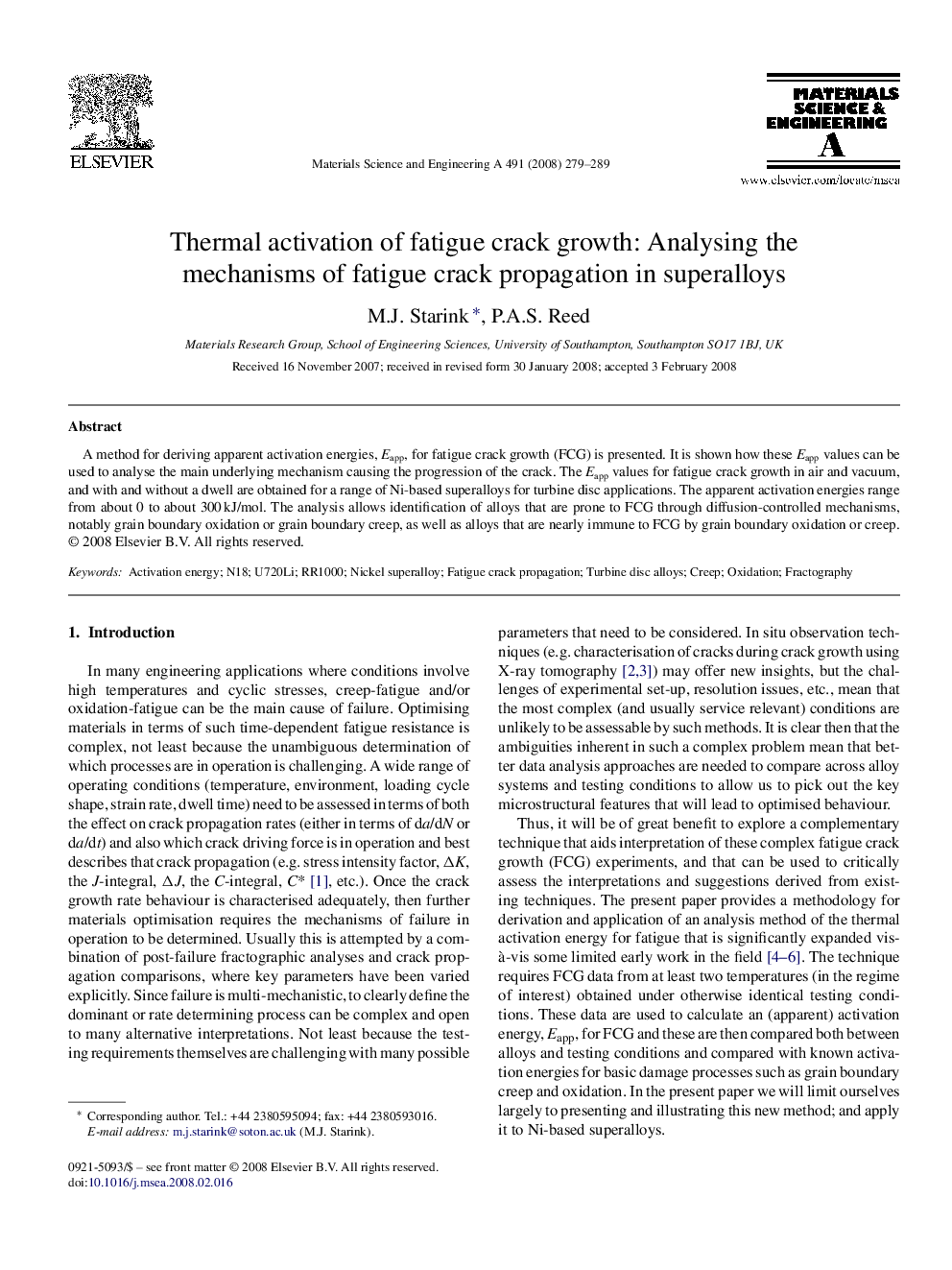| Article ID | Journal | Published Year | Pages | File Type |
|---|---|---|---|---|
| 1582051 | Materials Science and Engineering: A | 2008 | 11 Pages |
Abstract
A method for deriving apparent activation energies, Eapp, for fatigue crack growth (FCG) is presented. It is shown how these Eapp values can be used to analyse the main underlying mechanism causing the progression of the crack. The Eapp values for fatigue crack growth in air and vacuum, and with and without a dwell are obtained for a range of Ni-based superalloys for turbine disc applications. The apparent activation energies range from about 0 to about 300 kJ/mol. The analysis allows identification of alloys that are prone to FCG through diffusion-controlled mechanisms, notably grain boundary oxidation or grain boundary creep, as well as alloys that are nearly immune to FCG by grain boundary oxidation or creep.
Keywords
Related Topics
Physical Sciences and Engineering
Materials Science
Materials Science (General)
Authors
M.J. Starink, P.A.S. Reed,
